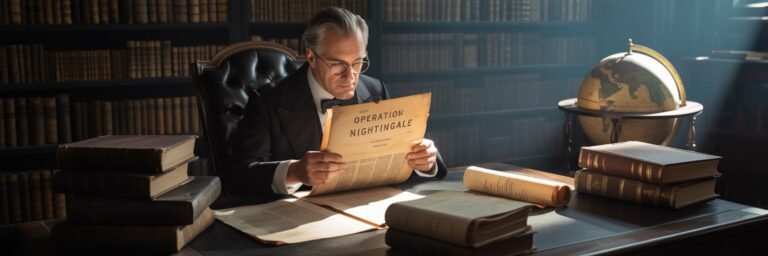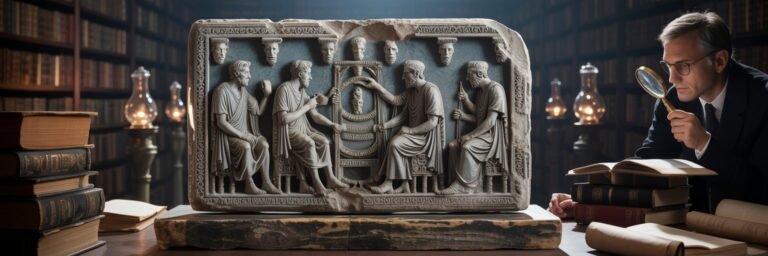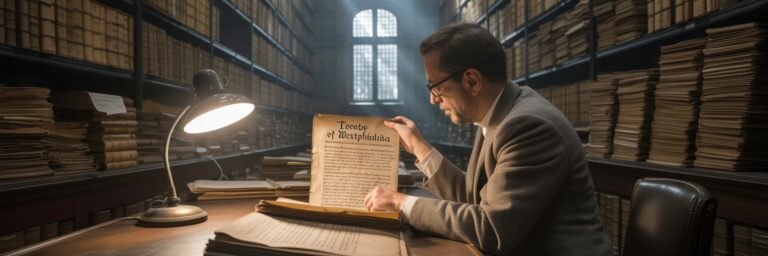INTRODUCTION
From the shadowy corridors of history emerged tales steeped in scheming, secrecy, and subterfuge. Conspiracy theories provide intriguing alternatives to conventional historical narratives. Regardless of whether these tales challenge prevailing thoughts or not, they offer a gateway into human psychology and sometimes shed a different light on historical events. This piece aims to examine the nuances of historical conspiracies, separating facts from fiction, and interpreting their cultural significances with a discerning eye.
HISTORICAL BACKGROUND
The term “conspiracy theory” dates back to the 19th century, but the dissemination of such ideas without foundation has been as long as history itself. Ancient Rome bore witness to numerous conspiracies; the most famous being the conspiracy against Julius Caesar which culminated in his assassination in 44 B.C led by Brutus and Cassius. Such episodes were often results of political turf fights or attempts at preservation of societal structuring.
Fast forward to the renaissance period, we find another legend: the Priory of Sion. According to the 1980s publications by Pierre Plantard, this supposed medieval secret society held the responsibility for preserving the bloodline of Christ and Mary Magdalene – an idea popularised by Dan Brown’s “The Da Vinci Code”. While this theory is widely dismissed as a hoax, it represents the persistent fascination if not obsession with secret societies in history.
THEORIES AND INTERPRETATIONS
Historical conspiracy theories are as diverse as history itself. Shakespearean authorship conspiracy theory disputes William Shakespeare’s authorship claim to his works, proposing instead that authors like Edward de Vere, Earl of Oxford, as the true author.
Another enduring conspiracy theory is whether the U.S dropped atomic bombs on the Japanese cities Hiroshima and Nagasaki in 1945 to end the Second World War or to intimidate the Soviet Union. While mainstream historical interpretations highlight the former, authors like Tsuyoshi Hasegawa, in his book “Racing the Enemy”, argue for the latter.
Then there is Marlowe’s death theory, which insists that Elizabethan playwright Christopher Marlowe staged his death to escape imprisonment, continuing to write plays clandestinely. This theory has found supporters in scholars like Samuel Tannenbaum and Calvin Hoffman, who cite compelling evidence to support their claims.
MYSTERIES AND CONTROVERSIES
The fascination with historical conspiracies often lies in the mysteries and controversies they hold. Take the moon landing conspiracy theory for instance. In 1969, Neil Armstrong’s iconic “giant leap for mankind” was marred by arguments suggesting that the event was staged by NASA and the U.S. government with sinister intent, skeptics cite anomalies in photographs and radiation belts as supposed evidence.
Another controversial theory is around the Lincoln assassination. While it is widely accepted that John Wilkes Booth assassinated President Abraham Lincoln, theorists postulate that he was part of a wider conspiracy, implicating the Confederate government or other powerful entities.
SYMBOLISM AND CULTURAL SIGNIFICANCE
Historical conspiracies often address the zeitgeist of their times, symbolising prevalent doubts and fears. During the Cold War, rampant conspiracy theories mirrored widespread mistrust towards governments. The previously mentioned moon landing conspiracy, for instance, emerged during a time of immense geopolitical tension and technocratic rivalry.
More than mementos of history, these theories often permeate cultural and popular mediums. For instance, the Roswell UFO incident conspiracy theory has cemented itself in popular culture, being referenced in movies, series, and works of art.
MODERN INVESTIGATIONS
Despite their contentious nature, modern investigators give credence to some historical conspiracies. Investigative journalists, academicians, and even governmental bodies have delved into these murky waters.
A classic example is the JFK assassination investigation. Lee Harvey Oswald’s role as the lone gunman has been questioned since day one, inciting numerous investigations over the years, including the famous Warren Commission. Elements such as the “magic bullet theory” have been hotly debated, adding momentum to the belief that more than one gunman was involved.
LEGACY AND CONCLUSION
Conspiracy theories have a deep and enduring legacy. They reflect our insecurities and fears, while serving to question established narratives. Whether it’s the mystery surrounding the Bermuda Triangle, the cryptic symbols associated with Freemasonry, or newer theories about 9/11 – these theories force us to observe critical thinking in action.
However, it’s essential to approach these with balanced skepticism. While it’s tempting to challenge mainstream narratives, it’s equally important to distinguish truth from sensationalism. Understanding historical conspiracies gives us valuable insight into human nature, our obsession with the unknown, and how power and information are manipulated. As we demystify the past with an open, analytical mind, we stride closer to the truth shrouded in the shadows of time.





